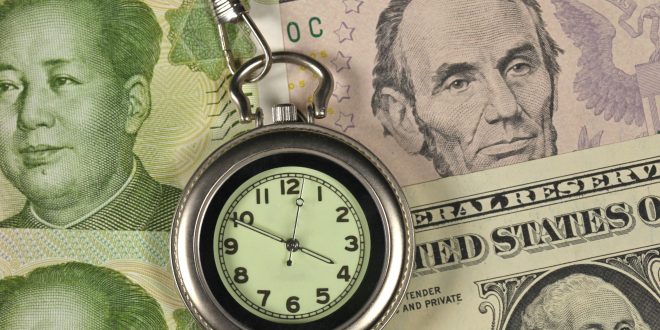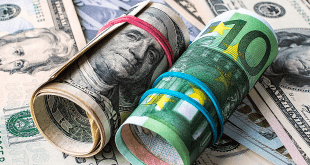Last week witnessed an event that had been anticipated by markets for some time, as the Federal Reserve policy meeting surprisingly saw a hawkish change in tone with the Federal Open Market Committee (FOMC) seeing interest rate hikes sooner than previously expected.
The Fed is now expecting raising interest rates not just once by twice by the end of 2023, versus expectations that the current interest rates could remain at historically low levels near 0% until 2024.
Despite maintaining interest rates and the current pace of asset purchases at $120 billion a month, the policy statement had a huge impact on the markets, affecting exchange rates, commodities, and stocks.
Nevertheless, Fed officials continue to show different opinions about the future path of the central bank even after the meeting. For instance, St. Louis Fed President James Bullard is expecting an interest rate hike as early as next year, due to the rise in inflation rate above the 2% target, which some believe might be not as temporary or transitory as the Fed explains. On the other hand, his counterpart in Minneapolis Neel Kashkari remains against raising interest rates through 2023, believing that low-interest rates are helping more people find work.
Inflation concerns exceed the United States. Across the Atlantic, the Bank of England (BoE) expected to begin raising interest rates in the second or third quarter of next year, after the consumer price index (CPI) rose by 2.1% in May. The Bank of America Merrill Lynch (BofA) and Credit Suisse previously ruled out a rate hike before 2023, but now forecast raising rates following the surge in inflation above the 2% target with increasing signs of economic recovery. HSBC is also seeing that it is more likely for the BoE to begin a tightening cycle next year. BoE expects inflation in the United Kingdom (UK) will reach 2.5% in 2021.
Last month’s inflation reading came at 3.6% in Canada and 2% in the Eurozone.
Although British monetary policymakers are expecting the surge in consumer prices to be temporary, with the inflation rate meeting its target next year, BoE Governor Andrew Bailey expressed readiness to address sustained inflationary pressures.
But inflation is not the only reason for concern in Europe, with fears about the rising number of new cases infected with the Delta strain of the Coronavirus, which was first discovered in India. The new variant concerns come amid easing preventive measures and travel restrictions with more countries aiming to return to normal levels of activity.
On a more positive note, huge investments of more than $3 billion have been allocated by the Biden administration to research, develop, and produce antiviral medicines that could be used to treat COVID-19.
In other markets, the Russian Central Bank raised its main rate by 50 basis points to 5.5%, while in Turkey the main interest rate was maintained unchanged at 19%.
Dollar
The U.S. Dollar (USD) registered large gains last week, for the second week in a row, due to increased demand for the greenback following the release of the Fed’s policy statement.
The WSJ Dollar Index rose by 1.54 points, or 1.80%, to finish the week at 87.08, its highest level since April 7, registering its largest weekly gain since April 3, 2020.
Over the past two weeks, the index rose by about 2.14%, in its best two-week rise since March 20, 2020.
On the monthly level, the Dollar is up 2.33% and by 2.45% since the beginning of the year.
The Federal Reserve Bank of New York’s monthly survey results showed that U.S. consumers expect an economic boom in 2022. The May survey results also showed higher expectations for inflation, home prices, earnings, and employment. Median expectations for inflation next year continued to rise for the seventh consecutive month, reaching 4%, compared with 3.4% in April, hitting a new record high. Meanwhile, the expectations for inflation over the next three years rose to 3.6% from 3.1%. The expectations for a higher unemployment rate dropped to a record low of 31.9%.
Initial jobless claims rose in the prior week to 412,000, according to data by the U.S. Department of Labor.
Meanwhile, business inventories declined by 0.2% in April, while industrial production expanded by 0.8%.
The greenback rose by 0.5% against the Japanese Yen (JPY) and 2.15% to the British Pound (GBP).
Euro
The Euro (EUR) declined by 2.04% against the U.S Dollar (USD) this week as the EUR/USD pair finished at 1.1864, after declining for three sessions in a row.
This marked the biggest one-week percentage decline for the pair since April 3, 2020.
In addition, three consecutive weekly losses mean the pair is down by 2.97% for the month, erasing its gains since the beginning of the year to a 2.88% loss.
The European Central Bank (ECB) has extended a EUR 70 billion capital relief measures for Eurozone banks for another nine months, allowing 39 banks to continue excluding holdings at central banks in calculating the mandatory leverage ratios.
The measure, which helps lenders supply credit amid recovery from the coronavirus pandemic, was first approved in September 2020. It was set to expire before the end of June but will now continue until March 2022.
Moreover, the European Union (EU) launched, at the beginning of the week, the sale of the first bond backing its massive COVID-19 recovery fund with the aim to provide the needed finances to member countries to combat the pandemic.
A 10-year bond represented the beginning of an expected EUR 800 billion of debt issuance until 2026.
In Italy, Prime Minister Mario Draghi called for more stimulus across the continent to restore pre-pandemic economic growth, as the former ECB President believes the lingering uncertainty provides ground for more monetary and fiscal stimulus. Draghi says that after protecting the supply, it would be suitable now to ensure demand recovery to exceed pre-pandemic economic growth levels.
Gold
Gold’s most active contracts finished the week at its lowest closing level in about seven weeks after declining for two sessions in a row, as the U.S. Dollar (USD) continued to rise.
Accordingly, the yellow metal registered its third consecutive weekly decline.
Gold futures for August delivery closed at $1,769 per ounce, its lowest since April 30, falling by 5.9%, in the worst weekly performance since mid-March of 2020.
Oil
Oil prices rebounded by the end of the week amid positive expectations for demand recovery to record their consecutive weekly rise.
The global benchmark, Brent crude futures for August delivery rose by 1.13%, while the U.S. West Texas Intermediate (WTI) crude futures for July delivery finished the week higher by 1.03%.
Data by Baker Hughes showed that the number of active rigs drilling for crude oil in the United States increased by eight to 373 this week, while natural gas rigs increased by a single rig, bringing the total rig count to 470.
U.S. crude oil inventories declined by 7.4 million barrels last week, gasoline stockpiles rose by 2 million barrels, while distillate inventories decreased by 1 million barrels, according to data by the Energy Information Administration (EIA).
OPEC expects the U.S. oil production growth to remain limited in 2021 despite higher prices, which provides more leverage to the OPEC+ alliance in managing the market before a possible surge in shale crude production next year.
Stocks
European stocks maintained a downward trend as the STOXX Europe 600 index turned by the end of the week to a loss of 1.19%, erasing earlier gains following its biggest decline since May 11.
Not only is this the worst weekly loss for the index since February 26, but it has also ended a four-week rising streak.
The EURO STOXX 50 Index fell by 1.05% for the week.
The UK’s FTSE100 index ended the week lower by 1.63%. The German DAX registered a weekly decline of 1.56%, while the French CAC40 index lost 0.48%.
Meanwhile, the New York Stock Exchange (NYSE) main indices showed a negative performance, amid concerns about raising interest rates sooner than expected.
The Dow Jones Industrial Average dropped by 3.5%, the index’s worst weekly performance since 30 October. The S&P 500 fell by 1.9%, while the Nasdaq Composite lost 0.3%.
 Noor Trends News, Technical Analysis, Educational Tools and Recommendations
Noor Trends News, Technical Analysis, Educational Tools and Recommendations





